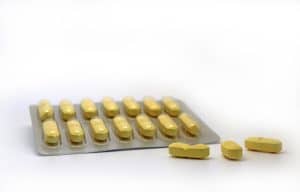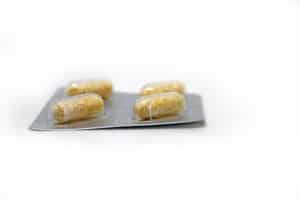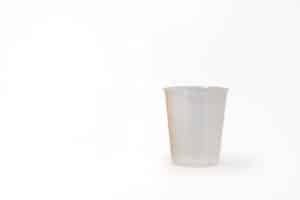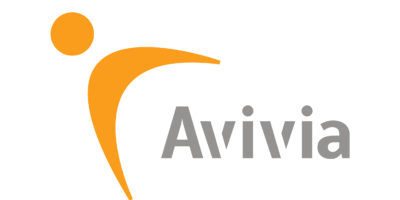Home » Lab Capabilities » Pharmaceutical » Dosage Forms
Pharmaceutical Dosage Forms
Pharmaceutical dosage forms play a pivotal role in the effective delivery of medicinal agents, ensuring their safe and efficient administration to patients. These forms serve as the carriers or vehicles for pharmaceutical substances, transforming raw drug materials into organized and standardized products that can be easily and conveniently consumed. The diversity of dosage forms reflects the dynamic intersection of pharmaceutical science, technology, and patient-centric healthcare.
In the realm of pharmaceuticals, dosage forms encompass a wide array of preparations, each tailored to meet specific therapeutic needs and patient preferences. From traditional tablets and capsules to innovative transdermal patches and sustained-release formulations, the design and development of dosage forms require a nuanced understanding of drug properties, patient characteristics, and regulatory considerations.
This multifaceted field involves the integration of various disciplines, including pharmaceutics, pharmacokinetics, and formulation science, to optimize the delivery of pharmaceutical agents. The goal is to achieve maximum therapeutic efficacy with minimal adverse effects, ensuring patient adherence to prescribed regimens. Moreover, dosage forms play a critical role in enhancing drug stability, bioavailability, and overall patient experience.
Tablet
A tablet is a compressed solid pharmaceutical dosage form often destined for oral delivery, but tablets for other routes of administration (e.g. vaginal) also exist. They contain the drug substance to be applied mixed with excipients including diluents or bulking agents, binding agents, flavours, sweeteners, pigments, desintegrants, lubricants and glidants. Tablets can be coated which has several advantages, including easier administration by the patient, an added functionality of controlled release of drug substance, and improving physicochemical stability and thereby shelf life of the product. For patient compliance and manufacturability, most tablets are round or oval-shaped. Using tablets to deliver drug to patients can be preferable to using liquid formulations, as physicochemical and microbiological stability are often better ensured, and fixed unit doses can be administered to the patient.
Amongst others, the following tablet types are available based on release profile:
- Orodispersible tablets
- Chewable tablets
- Immediate release tablets
- Gastro-resistant/Enteric coated tablets
- Extended release tablets

Orodispersible tablets are designed to fall apart within the mouth and thus must disintegrate very rapidly. Chewable tablets must do the same, but with the help of chewing. Immediate release tablets can be considered the regular tablets that will have to be swallowed. Drug substance release rate should not be appreciably affected by the composition of the tablets. Gastro-resistant or enteric coated tablets are designed to release the drug substance after the tablet has passed the gastric section of the gastrointestinal tract, as a means of preventing stomach acid degradation of the drug substance or gastric side effects. Extended release tablets release drug substance over an extended amount of time and are often used to improve patient compliance.
Avivia has concrete hands-on experience with the formulation development of the mentioned dosage forms. Interested? Get in touch with us!
Capsule
A capsule is a pharmaceutical dosage unit consisting of either an outer “hard” capsule shell containing either loose or prepacked solid drug substance and excipient particles, or a soft capsule with a closed outer surface and a liquid filling. Like tablets, they are primarily used to deliver drug orally. The outer capsule shell is made of a gelatinous base, often gelatin or a starch derivative with or without softening agents. As with tablets, common excipients are diluents or bulking agents, glidants, pigments, and, in the case of liquid filled soft capsules, preservatives. Capsule shells can also be film coated in order to ease patient administration, control release of drug substance and to improve physicochemical stability and thereby shelf life of the product.
Amongst others, the following capsule types are available based on release profile:
- Immediate release capsules
- Gastro-resistant/Enteric coated capsules
- Extended release capsules

Immediate release capsules can be considered the regular capsules that will have to be swallowed. Drug substance release rate should not be appreciably affected by the composition of the tablets. Gastro-resistant or enteric coated capsules are designed to release the drug substance after the capsule has passed the gastric section of the gastrointestinal tract, as a means of preventing stomach acid degradation of the drug substance or gastric side effects. Extended release capsules release drug substance over an extended amount of time and are often used to improve patient compliance.
Oral solution
When oral delivery is desired but solid formulations are not acceptable due to swallowing difficulties, an oral solution may be a better option for patient compliance and convenience. The simplest and therefore most desirable form of an oral liquid is an oral solution, a single-phase system into which the drug substance and accompanying excipients are dissolved into a vehicle, most often purified water. Eligible excipients for oral solutions include the vehicle, pH regulators or buffers, microbiological and chemical preservatives, taste maskers/modifiers, thickeners, and pigments. By definition all compounds must be in solution, which can be challenging for certain drug substances. Often, solubility is increased by adjusting the pH (in the case of an ionizable drug substance), adding cosolvents or complexing agents to the vehicle or adjusting the vehicle entirely (i.e. an oleaginous vehicle). As the sense of taste of a drug substance is increased when it is in solution, taste masking is even more important in oral solutions than in solid oral dosage forms. Solutions may be formulated in the form of syrups containing a high amount of sugar, or sweet-tasting polyols may be used instead. Viscosity also affects taste and mouthfeel, so thickeners can be used to aid in improving organoleptic properties of the formulation as well. As drug substances in solution are generally more prone to chemical degradation, controlling rate of degradation by adding in preservative compounds is of increased importance in oral solutions.

Oral suspension
When a drug substance is to be delivered in an oral liquid formulation but has a prohibitively low solubility, or hydrolyzes rapidly when in aqueous solution, it may instead be formulated into an oral suspension. A suspension describes a mixture of a vehicular liquid with solid particles containing the drug substance, amongst others. An important downside of oral suspensions is that it requires proper handling by the patient upon administration, being shaken for use as to ensure proper dosing from start to end. However, compared with oral solutions, oral suspensions often show better chemical stability of the drug substance and fewer problems with taste masking, as the drug substance is (mostly) in solid state within the vehicle. Eligible excipients for oral suspensions include the vehicle, pH regulators or buffers, microbiological and physicochemical preservatives, taste maskers/modifiers, thickeners, deflocculants, and pigments. The role of thickeners is amplified for oral suspensions as they increase vehicle viscosity, affecting sedimentation rate and the ability to redisperse the oral suspension. Deflocculants or peptizers are added for the purpose of aiding redispersion of sediment. As with oral solutions, pH buffers and preservatives are of importance for physicochemical and microbiological stability. pH may be selected in such a way as to make the drug substance as insoluble as possible within the vehicle.

Oral emulsion
When a drug substance has low chemical stability or solubility in aqueous medium, an oral emulsion may instead be used. An emulsion describes a mixture of two or more immiscible liquids. Often, oral emulsions are presented in the form of oil-in-water emulsions and drug substance may be present in both phases of the mixture. Like with suspensions, an important downside of oral emulsions is that it requires proper handling by the patient upon administration, being shaken for use as to ensure proper dosing from start to end. Eligible excipients for oral suspensions include the vehicle (both phases), emulsifiers, pH regulators or buffers, microbiological and physicochemical preservatives, taste maskers/modifiers, thickeners, and pigments. Emulsifiers are of paramount importance for the physical stability of emulsion systems.

Avivia offers solutions for formulation challenges, either in the form of on-off problem-solving or in the form of a full pharmaceutical formulation development procedure. Interested? Get in touch with us!
Lorem ipsum dolor sit amet, consectetur adipiscing elit. Ut elit tellus, luctus nec ullamcorper mattis, pulvinar dapibus leo.



